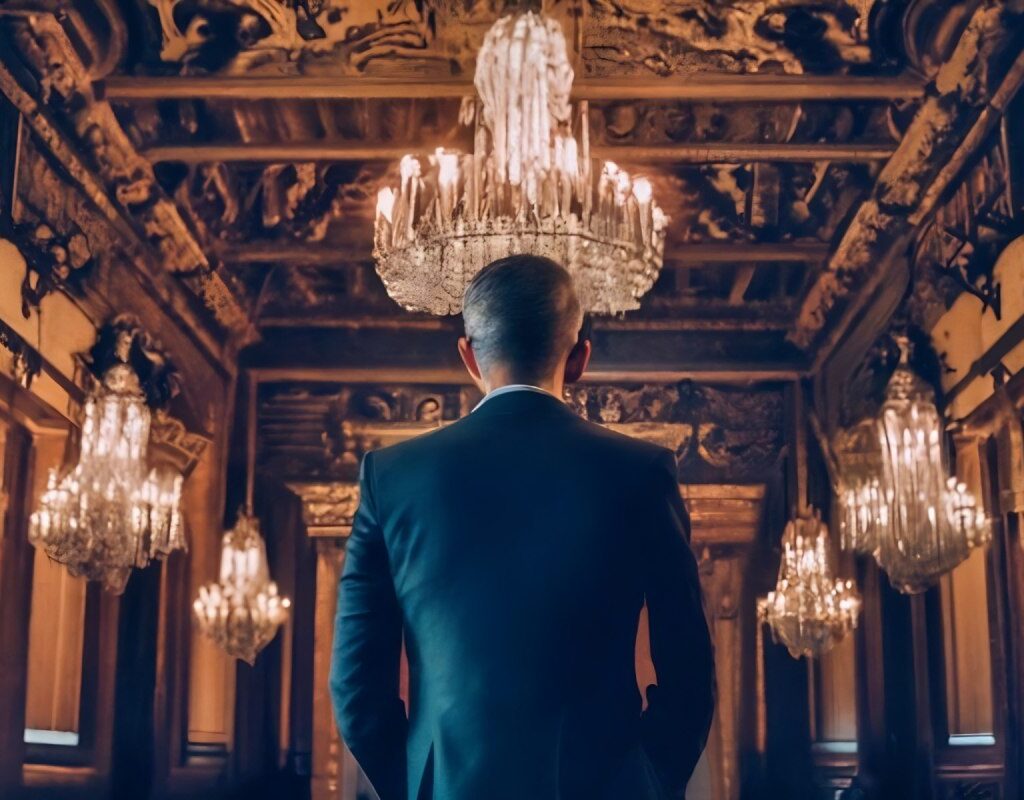The Subtleties of Independence: More Than Just May 25
From Royal Allegiance to the Pursuit of Sovereignty: The Path to Independence
Much as in modern times where some have hidden behind masks of opportunism and violation (take, for instance, the notable case of Licio Gelli’s P2 that made headlines), the alignment of certain “patriots” with murky organizations resulted in more strife than accolades.
Regarding Cornelio Saavedra, a pivotal player of the First Junta on May 25, 1810, who assumed leadership of the United Provinces of the Río de la Plata (Argentina’s earlier name), rumors suggest his association with the Italian carbonaries.
The latter, owing to Spanish financiers, transformed the May 25 “Revolution” into a commercial stratagem rather than a singular independence movement.
On that day, we hadn’t completely disentangled from Spain. The backdrop was King Ferdinand VII being ousted by Napoleon’s forces, while the Bonapartes held sway over Spain. The freedom-seeking voices of the Río de la Plata were not focused on carving out a sovereign nation.
Fundamentally, they showcased allegiance to the exiled Spanish monarch and aimed to fortify Buenos Aires’s customs authority. This greatly favored Spanish merchants in the vicinity, along with illicit trade profits.
Hence, Argentines, with their foundations deeply embedded in commerce, mark May 25th as the “Economic Freedom Day.” Yet, a true declaration of our Independence was six years in the making, not until July 9, 1816.
The fervor for self-rule exacerbated the rift with Spain. What began as a nod to the Bourbons shifted, largely due to regional leaders over the metropolitan elite, into a resolute quest for liberation.
Thus, we stand as a unique nation that, while always in the mood for celebration, marks its inception biannually, not just once.
Freemasonry’s Role in South American History
Masonic Struggles During South American Independence
The titles above delve into various facets of the matter you outlined, appealing to those keen on South American history intertwined with Freemasonry. Should you require further insights or any other guidance pertaining to this subject or another, please let me know.
Although he had distinguished service in the Spanish military (notably in the Battle of Bailén) and was initially devoted to the Order, he later established the aforementioned Lautaro Lodge and rebelled against his erstwhile benefactors.
He championed the Masonic cause beyond our frontiers but encountered disputes with local Carbonari delegates, leading to his voluntary departure to Europe on February 11, 1824.
Inevitably, the Carbonari aimed to redress the scales. In 1838, they dispatched “brother” Giusseppe Garibaldi to assail the Argentine shores via the Uruguay River.
By 1865, the Masonic realm under Dr. José Gaspar Rodríguez de Francia and successors, Carlos López and Francisco Solano López — the Republic of Paraguay — grappled with Carbonario dominance in the War of the Triple Alliance, comprising Argentina, Brazil, and Uruguay.
Solano Lopez, also a mason, undertook the shielding of a pioneering vision, leading the Guarani nation to establish South America’s premier blast furnace, institute 400 schools for a populace of 400,000 (an astonishing feat of the era), initiate two paper mills for bilingual (Spanish-Guarani) publications, and launch the inaugural railroads, all as state endeavors.
Yet, a harrowing conflict was on the horizon. With profound human sacrifice, Paraguay capitulated. As Brazilians and Uruguayans reflected upon their roles, we Argentinians, possessing a selective recall, have yet to voice our remorse over this betrayal, influenced by European lodges.
Peronism’s Complex Interplay with Esotericism in the 20th Century
Mystical Ties in Argentine Politics: Tracing from Brother Lalo to the Southern Cross Cosmic Fraternity
As the 20th century dawned, the melding of Esotericism — interpreted in various shades — with Argentina’s political might not only ascended to novel heights but also manifested with stark clarity. The Peronist movement stands as a testament.
Throughout its existence, Juan Domingo Perón’s approach to governance was deeply intertwined with insights from “Brother Lalo” (Hilario Fernández), a Spanish immigrant who spearheaded the “Basilio Scientific School,” a neo-spiritist faction that saw significant traction during that era. Notably, when rifts emerged between Perón and the Catholic Church, this very group convened expansive gatherings at Luna Park.
Throughout his initial two tenures and a considerable portion of his Spanish exile, José López Rega, dubbed the “magician,” functioned under Perón’s aegis.
Conversely, Perón’s affiliations extended to Licio Gelli, to whom he vowed to export dominion if he secured the presidential mantle again — a pledge that went unfulfilled. Rumor has it that Gelli, in retribution and employing mystical tactics, sanctioned the theft of the General’s hands posthumously, aiming to thwart his spiritual ascension.
This audacious move was supposedly prompted by Cristo Cristoff Naumova, a Bulgarian-Uruguayan astrologer, who had previously delineated the astrological blueprint of Argentine Justicialism’s pioneer.
Even the staunch realists weren’t spared. Ricardo Frondizi, sibling to ex-president Arturo Frondizi, in 1967 established the Argentine Sky Scouts Association with a focus on “cosmic dialogue”. Subsequently, he instituted the Southern Cross Cosmic Fraternity, bolstered by his brother’s network and endorsement…





